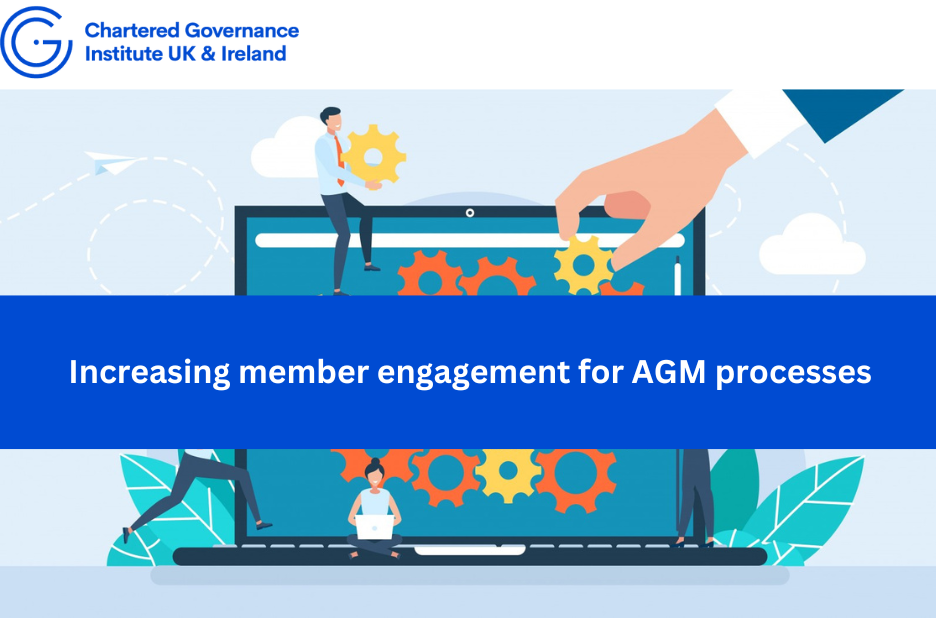In the lead up to the formal AGM notice being sent, the AGM pre-period is a great time to promote engagement, and for planning, communicating, advertising and preparing members/shareholders. Try to envisage the member/shareholder experience in all aspects of the AGM process.
Consider:
- Timing and meeting location
- Meeting agenda
- Historical AGM turnout information
- Minority groups
- Obtaining feedback.
Look to promote the process:
- Create/add a banner to all staff email signatures
- Place pull up banners or posters/notices in high foot fall locations
- Mention the AGM at all other types of events.
- Add news items to your website/social media posts
- Send warm-up emails.
Incentives for Participation
Remember to focus on what’s important to members/shareholders and why it would benefit them to get involved.
You may wish to highlight some incentives. Examples include:
- Giving a donation to charity for every member/shareholder vote
- Run your meeting alongside another event
- Consider a high-profile keynote speaker
- Add members/shareholders that engage/vote/participate into a prize draw
- Hold your AGM at a venue that people would like to go to.
Proxy Voting and Notice Period
The notice and proxy voting period are likely much shorter than the pre-notice period and may limit your ability to undertake engagement processes.
For email AGM notices, try using an email delivery system that tracks opens, click throughs and other metrics to measure the engagement rates, this will be valuable information for next time, or any reminder processes.
For sending postal proxy packs, you may improve engagement by implementing some of the following:
- Add your organisation logo to the outer envelope
- Use colour/graphics
- Use plain English
- Add a pre-paid/pre-addressed return envelope
- Make use of ‘quick vote’ option
- Offer multiple channels of submitting Proxy votes or getting involved
- Offer an incentive (cup of tea and a pastry on arrival) for those pre-registering.
For online proxy voting processes, try to keep the site simple/intuitive. Use voting metrics to determine reminder activities. Use it as an opportunity to ask if they would like to attend the meeting instead of submitting a proxy vote.
On the day of The AGM
By the time the meeting occurs the time for promotion has passed. Ensuring everyone’s voice is heard at the meeting will be key to increasing engagement.
If you are looking to run a Hybrid AGM, make sure that everyone attending remotely has the same functions to be seen and heard along with secure voting options as those attending in person. This will mean planning audio/visual equipment, internet connection speeds and rehearsals for the chair and panel members.
Post-AGM Review
After the AGM it is a good idea to undertake a lesson learnt process with all stakeholders to determine what worked well and what didn’t, this will help planning for the next event. Also, if you recorded the event, put a copy of it on your company site as not everyone will be able to make the meeting, but may well be interested to learn what happened.
This blog was written for CGIUKI by Andrew Tye at UK Engage. You can see the blog published by CGIUKI on their website.
Get in Touch!
Are you ready to elevate your AGM engagement strategy? Contact us today to discover how we can assist you in optimizing your processes and ensuring a successful AGM. Call us at 0161 209 4808 or email enquiries@uk-engage.orgto start the conversation!

